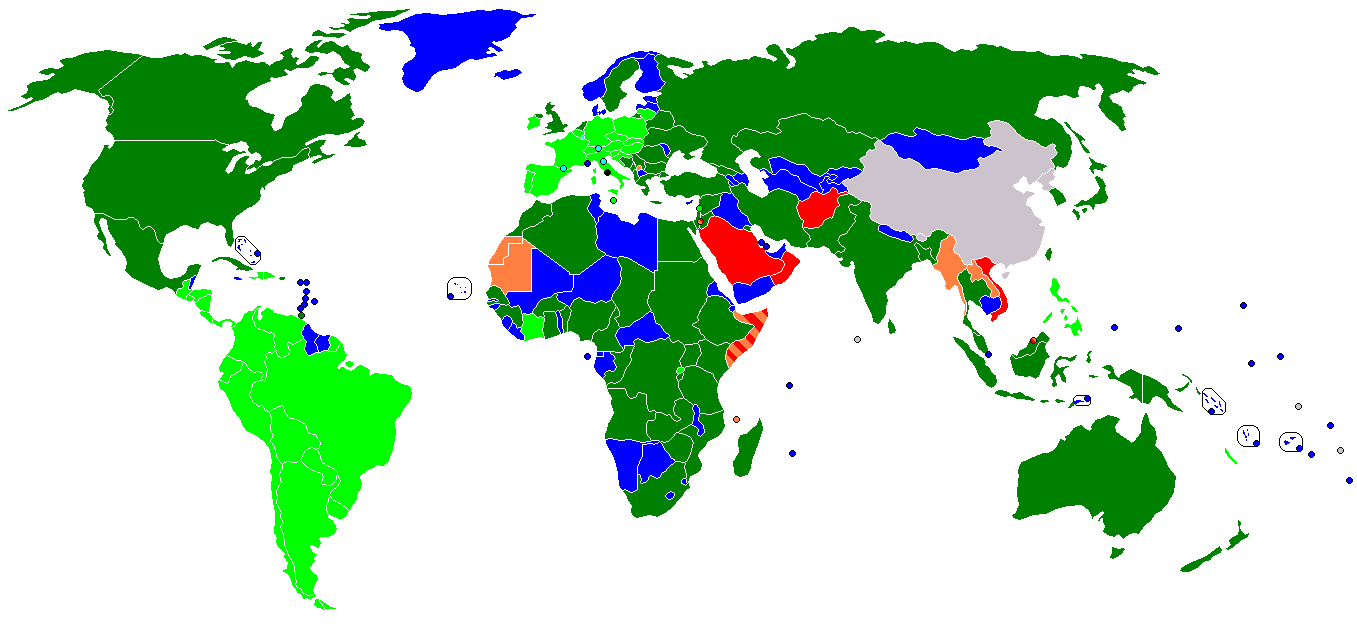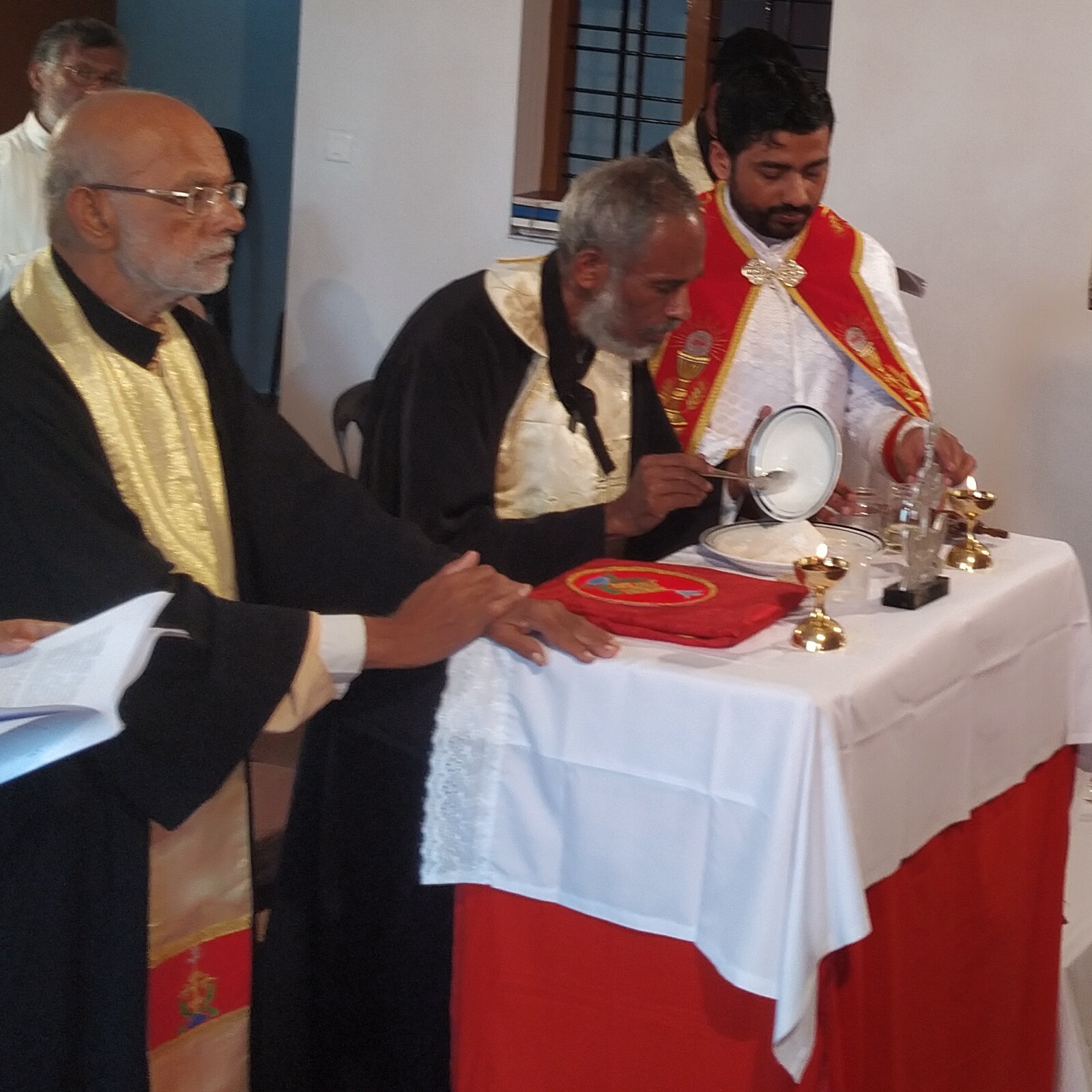|
George Panikulam
George Panikulam (born 26 October 1942) is a bishop of the Syro-Malabar Catholic Church who spent his career in the diplomatic service of the Holy See. He was given the title of nuncio in 1999 and consecrated a bishop in 2000. He retired in 2017. Biography He was born in Puthenchira, Kerala, India, on 26 October 1942. He studied at the minor seminary in Thope, Thrissur, and St. Joseph’s Pontifical Seminary in Aluva. He was ordained a priest on 11 March 1967 by Archbishop George Alapatt. He continued his studies in Rome, earning a doctorate in sacred scripture and a licentiate in canon law and theology. He studied at the Pontifical Ecclesiastical Academy to prepare for a diplomat’s career beginning in 1975.. He was appointed Titular Archbishop of Caudium and Apostolic Nuncio to Honduras on 4 December 1999. He was consecrated a bishop on 6 January 2000 by Pope John Paul II. He was appointed Apostolic Nuncio to Mozambique on 3 July 2003. On 24 October 2008 he was named Apos ... [...More Info...] [...Related Items...] OR: [Wikipedia] [Google] [Baidu] |
His Grace
His Grace or Her Grace is an English Style (manner of address), style used for various high-ranking personages. It was the style used to address English monarchs until Henry VIII and the Scottish monarchs up to the Act of Union (1707), Act of Union of 1707, which united the Kingdom of Scotland and the Kingdom of England. Today, the style is used when referring to archbishops and non-royal dukes and duchesses in the United Kingdom. Examples of usage include His Grace The Duke of Norfolk; His Grace The Lord Archbishop of Canterbury; or "Your Grace" in spoken or written address. As a style of Dukes in the United Kingdom, British dukes it is an abbreviation of the full formal style "The Most High, Noble and Potent Prince His Grace". Royal dukes, for example Prince Edward, Duke of Kent, are addressed with their higher royal style, Royal Highness. The Duchess of Windsor was styled "Your Grace" and not Royal Highness upon marriage to Prince Edward, Duke of Windsor. Ecclesiastical usage ... [...More Info...] [...Related Items...] OR: [Wikipedia] [Google] [Baidu] |
Kerala
Kerala ( ; ) is a state on the Malabar Coast of India. It was formed on 1 November 1956, following the passage of the States Reorganisation Act, by combining Malayalam-speaking regions of the erstwhile regions of Cochin, Malabar, South Canara, and Thiruvithamkoor. Spread over , Kerala is the 21st largest Indian state by area. It is bordered by Karnataka to the north and northeast, Tamil Nadu to the east and south, and the Lakshadweep Sea to the west. With 33 million inhabitants as per the 2011 census, Kerala is the 13th-largest Indian state by population. It is divided into 14 districts with the capital being Thiruvananthapuram. Malayalam is the most widely spoken language and is also the official language of the state. The Chera dynasty was the first prominent kingdom based in Kerala. The Ay kingdom in the deep south and the Ezhimala kingdom in the north formed the other kingdoms in the early years of the Common Era (CE). The region had been a prominent spic ... [...More Info...] [...Related Items...] OR: [Wikipedia] [Google] [Baidu] |
Living People
Related categories * :Year of birth missing (living people) / :Year of birth unknown * :Date of birth missing (living people) / :Date of birth unknown * :Place of birth missing (living people) / :Place of birth unknown * :Year of death missing / :Year of death unknown * :Date of death missing / :Date of death unknown * :Place of death missing / :Place of death unknown * :Missing middle or first names See also * :Dead people * :Template:L, which generates this category or death years, and birth year and sort keys. : {{DEFAULTSORT:Living people 21st-century people People by status ... [...More Info...] [...Related Items...] OR: [Wikipedia] [Google] [Baidu] |
21st-century Roman Catholic Titular Archbishops
The 1st century was the century spanning AD 1 ( I) through AD 100 ( C) according to the Julian calendar. It is often written as the or to distinguish it from the 1st century BC (or BCE) which preceded it. The 1st century is considered part of the Classical era, epoch, or historical period. The 1st century also saw the appearance of Christianity. During this period, Europe, North Africa and the Near East fell under increasing domination by the Roman Empire, which continued expanding, most notably conquering Britain under the emperor Claudius ( AD 43). The reforms introduced by Augustus during his long reign stabilized the empire after the turmoil of the previous century's civil wars. Later in the century the Julio-Claudian dynasty, which had been founded by Augustus, came to an end with the suicide of Nero in AD 68. There followed the famous Year of Four Emperors, a brief period of civil war and instability, which was finally brought to an end by Vespasian, ninth Roman em ... [...More Info...] [...Related Items...] OR: [Wikipedia] [Google] [Baidu] |
1942 Births
Year 194 ( CXCIV) was a common year starting on Tuesday (link will display the full calendar) of the Julian calendar. At the time, it was known as the Year of the Consulship of Septimius and Septimius (or, less frequently, year 947 ''Ab urbe condita''). The denomination 194 for this year has been used since the early medieval period, when the Anno Domini calendar era became the prevalent method in Europe for naming years. Events By place Roman Empire * Emperor Septimius Severus and Decimus Clodius Septimius Albinus Caesar become Roman Consuls. * Battle of Issus: Septimius Severus marches with his army (12 legions) to Cilicia, and defeats Pescennius Niger, Roman governor of Syria. Pescennius retreats to Antioch, and is executed by Severus' troops. * Septimius Severus besieges Byzantium (194–196); the city walls suffer extensive damage. Asia * Battle of Yan Province: Warlords Cao Cao and Lü Bu fight for control over Yan Province; the battle lasts for over 100 ... [...More Info...] [...Related Items...] OR: [Wikipedia] [Google] [Baidu] |
List Of Heads Of The Diplomatic Missions Of The Holy See
The following is a sortable list of the heads of the diplomatic mission of the Holy See. An apostolic nuncio (also known as a papal nuncio or simply as a nuncio) is an ecclesiastical diplomat, serving as an envoy or a permanent diplomatic representative of the Holy See to a state or to an international organization. A nuncio is appointed by and represents the Holy See, and is the head of the diplomatic mission, called an Apostolic Nunciature, which is the equivalent of an embassy. The Holy See is legally distinct from the Vatican City or the Catholic Church. A nuncio is usually an archbishop In Christian denominations, an archbishop is a bishop of higher rank or office. In most cases, such as the Catholic Church, there are many archbishops who either have jurisdiction over an ecclesiastical province in addition to their own archdi .... Diplomatic Posts Notes Apostolic Nuncio emeriti References External links * {{Europe topic, List of diplomatic missions of, ... [...More Info...] [...Related Items...] OR: [Wikipedia] [Google] [Baidu] |
Honduras
Honduras, officially the Republic of Honduras, is a country in Central America. The republic of Honduras is bordered to the west by Guatemala, to the southwest by El Salvador, to the southeast by Nicaragua, to the south by the Pacific Ocean at the Gulf of Fonseca, and to the north by the Gulf of Honduras, a large inlet of the Caribbean Sea. Its capital and largest city is Tegucigalpa. Honduras was home to several important Mesoamerican cultures, most notably the Maya, before the Spanish Colonization in the sixteenth century. The Spanish introduced Catholicism and the now predominant Spanish language, along with numerous customs that have blended with the indigenous culture. Honduras became independent in 1821 and has since been a republic, although it has consistently endured much social strife and political instability, and remains one of the poorest countries in the Western Hemisphere. In 1960, the northern part of what was the Mosquito Coast was transferred from Nicara ... [...More Info...] [...Related Items...] OR: [Wikipedia] [Google] [Baidu] |
Pontifical Ecclesiastical Academy
The Pontifical Ecclesiastical Academy ( la, Pontificia Ecclesiastica Academia, it, Pontificia Accademia Ecclesiastica) is one of the Roman Colleges of the Catholic Church. The academy is dedicated to training priests to serve in the diplomatic corps and the Secretariat of State of the Holy See. Despite its name, the Pontifical Ecclesiastical Academy is not one of the ten Pontifical Academies of the Holy See. The patron of the Pontifical Ecclesiastical Academy is Saint Anthony the Great. History The diplomatic service of the Holy See can be traced back to 325 AD when Pope Sylvester I sent legates to represent him at the First Council of Nicaea. The academy was created as the Pontifical Academy of Ecclesiastical Nobles in 1701 by Abbot Pietro Garagni, in close collaboration with Blessed Sebastian Valfrè of the Turin Oratory. Function Located inside Palazzo Severoli on the Piazza della Minerva in central Rome, the Pontifical Ecclesiastical Academy trains Catholic priests sent ... [...More Info...] [...Related Items...] OR: [Wikipedia] [Google] [Baidu] |
Puthenchira
Puthenchira is a village in Thrissur district in the state of Kerala, India. Demographics India census, Puthenchira had a population of 21416 with 9815 males and 11601 females. History Puthenchira and the surrounding areas were earlier known as Mahadevar Pattanam. In the second or the third century the Perumanadikals created a ‘Chira’ (causeway/bund) for the purpose of agriculture. The Cheraman Perumal designated the place for building the ‘Chira’ by throwing Puthen( the coin prevailing then). Since then it is believed that this place is called Puthenchira. Various muris(parts) of Puthenchira were ruled by the Kodungallur Thampuran and Mukundapuram (Muriyanatt-Nadavarambu) Nambiar after the Chera dynasty fell in the 12th Century. Later when Samudiri extended his territory, both Puthenchira and Kodungallur became part of his empire. Later in 1761, the Cochin king sought help from Travancore. Travancore obliged and de ... [...More Info...] [...Related Items...] OR: [Wikipedia] [Google] [Baidu] |
Syro-Malabar Catholic Church
lat, Ecclesia Syrorum-Malabarensium mal, മലബാറിലെ സുറിയാനി സഭ , native_name_lang=, image = St. Thomas' Cross (Chennai, St. Thomas Mount).jpg , caption = The Mar Thoma Nasrani Sliva or Saint Thomas christian cross, the symbol of the Syro-Malabar Church. , abbreviation=SMC, type = Catholic particular churches and liturgical rites, Self-governing church (''sui iuris'') , main_classification = Eastern Catholic , orientation = Eastern Christianity(Syriac Christianity) , scripture = , polity = Episcopal polity , governance=Holy Episcopal Synod of the Syro-Malabar Church, theology = East Syriac theology , leader_title = Pope , leader_name = Pope Francis, Francis , leader_title1 = Major Archbishop , leader_name1 = George Alencherry , leader_title3 = Administration , leader_name3 = Major Archiepiscopal Curia , ... [...More Info...] [...Related Items...] OR: [Wikipedia] [Google] [Baidu] |
Archbishop
In Christian denominations, an archbishop is a bishop of higher rank or office. In most cases, such as the Catholic Church, there are many archbishops who either have jurisdiction over an ecclesiastical province in addition to their own archdiocese ( with some exceptions), or are otherwise granted a titular archbishopric. In others, such as the Lutheran Church of Sweden and the Church of England, the title is borne by the leader of the denomination. Etymology The word archbishop () comes via the Latin ''archiepiscopus.'' This in turn comes from the Greek , which has as components the etymons -, meaning 'chief', , 'over', and , 'seer'. Early history The earliest appearance of neither the title nor the role can be traced. The title of "metropolitan" was apparently well known by the 4th century, when there are references in the canons of the First Council of Nicæa of 325 and Council of Antioch of 341, though the term seems to be used generally for all higher ranks of bishop ... [...More Info...] [...Related Items...] OR: [Wikipedia] [Google] [Baidu] |



